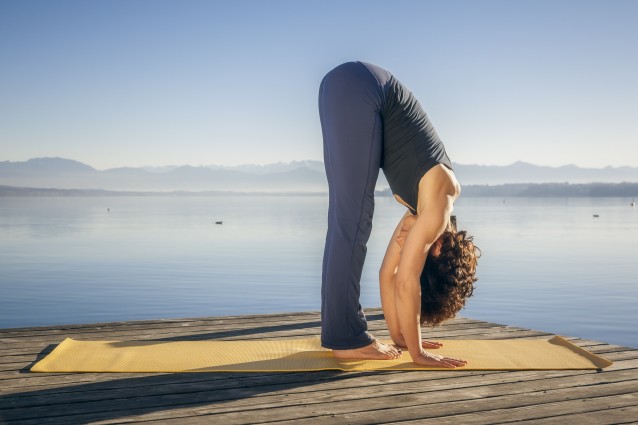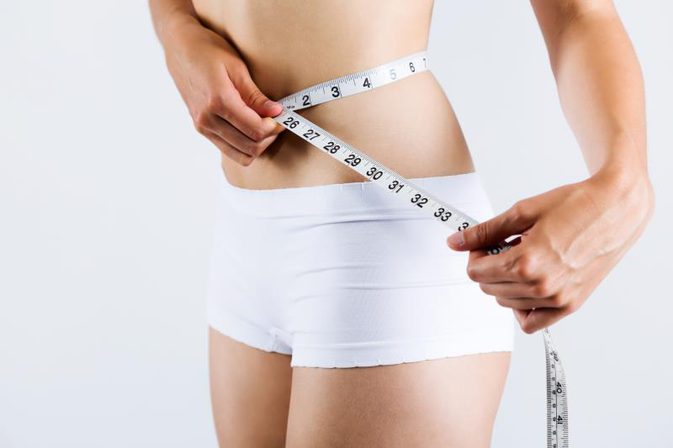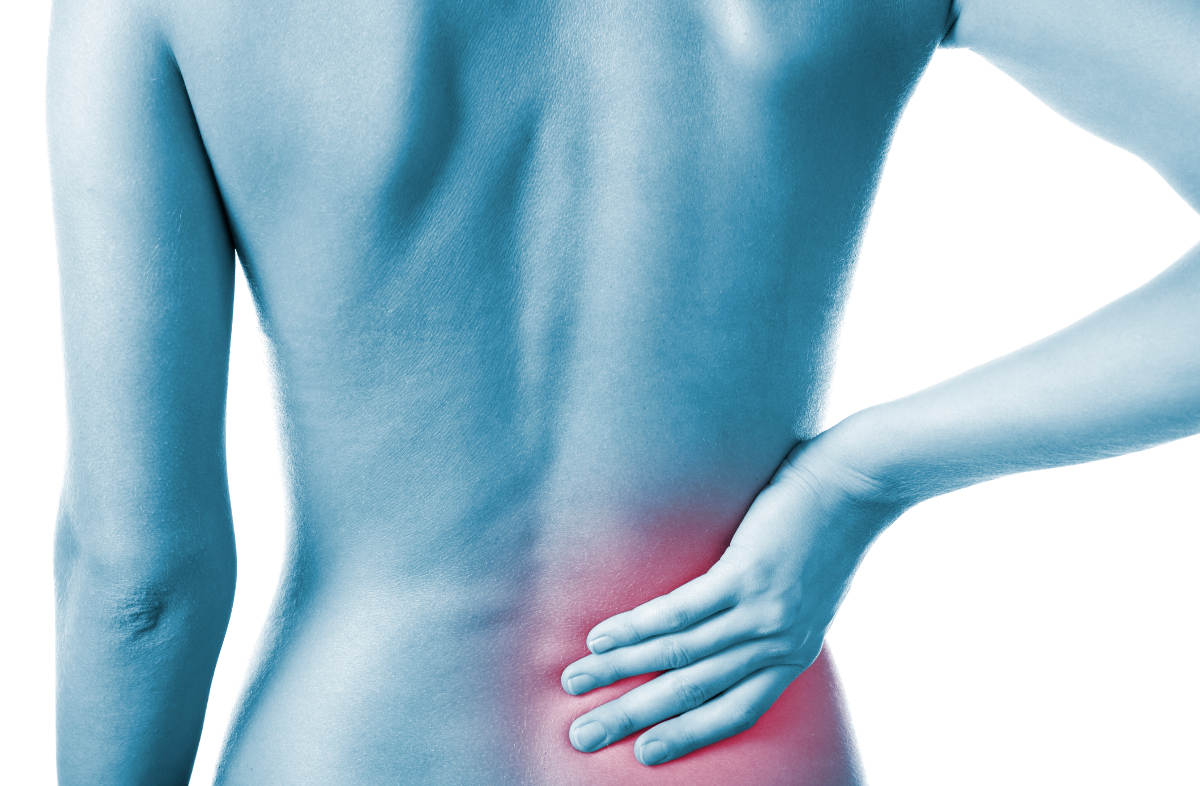Do you know the benefits of exercise? Exercise is any bodily activity that maintains and enhances you physical fitness and overall health and wellness. So what are you waiting for? Start preparing exercise charts suitable for you under guidance of experts on HelloDox Health App.
Stress is a very common factor for all working people. Work, home and taking care of the child all together causes great amount of stress in people. Exercising makes the body release endorphins, which are stress fighting hormones and help in relieving stress. There are various types of exercises which a working woman can do.
High energy activities: High energy aerobic exercises lead to an increased heart rate, which results in production of more endorphins that make the body fight stress naturally. They include running, skipping, dancing, etc. These also improve physical and mental health.
Yoga: Yoga is excellent for stress relief. It involves movement and stationary poses or postures, along with breathing exercises. Yoga enhances the body's natural response to relaxation, making your life healthier.
Tai Chi: Tai chi involves a series of flowing movements of the body along with breathing. Having its roots in martial arts, Tai Chi provides efficient stress relief.
Pilates: This exercise involves a series of movements and exercises performed on a mat. Pilates enhance strength, flexibility, endurance and immunity of the body.
Martial arts: Martial arts is an effective way of unleashing energy and venting out frustration, which result in reducing stress. There are different forms of martial arts to choose from, which include Judo, karate, Taekwondo and several others.
Kick boxing: Kick boxing reduces stress to a great extent and involves punching and kicking, which is performed with discipline. Kickboxing incorporates a rigorous workout schedule and is a great way to vent out frustration and energy, releasing stress.
Team sports: Team sports are an ideal way to relieve stress, work out and have fun, altogether. Playing tennis, cricket or football offers a double amount of stress relief. Playing with your family will encourage bonding, fun and help in relieving stress together.
On the go exercises: Several exercises such as running or jogging and cycling allow you to have a break, breathe some fresh country air and get your mind freshened up. Along with the release of energy, travelling across beautiful places helps in stress relief.
Meditation: Meditation is an amazing mind exercise for stress relief. It requires great concentration and must be performed in a quiet atmosphere. Peace of mind is obtained.
Gym activities: A gym has a lot of exercising instruments and devices. They involve power and strength and energy is unleashed. This is an ideal vent for anger and frustration, which results in great stress relief.
People face a lot of stress, which arise from various aspects of life, including work, home and children. Stress busting exercises should be practised to maintain a perfect mental health.
Who wouldn't like to flaunt ripped six-pack abs? While that is not entirely a true definition of fitness, aesthetically it is what many fitness enthusiasts aspire for - the proverbial six pack abs. The most popular symbol for fitness globally is a well-defined set of abs! Case in point is the recent music video of Kala Chashma with Katrina Kaif and her enviable abs. They would kill for it or (theoretically) die trying!
If you've been slogging in the gym without any results, here's some expert advice on the best exercises for abs. There are two simple rules that need to be followed - lose fat and build muscle. Keep in mind, we all have a potential six pack abdomen lurking underneath the layers of fat. Hence, for definition, you would require a really low fat percentage in the abdominal region for the abs to be visible. Which means, a carefully calibrated diet is extremely critical with respect to obtaining washboard abs. A sound diet plan coupled with an exercise programme can help you achieve the desired look. Most importantly, you need time, patience and dedication.
Having said that, most people, in their efforts to obtain the six pack, focus on ab exercises only and perform 1000s of crunches and completely neglect their back muscles. This imbalance can drive the spine out of its neutral alignment and lead to injuries.
Thumb rule: Do as many crunches as you can do back extensions. It's important to maintain balance in the strength of these two muscle groups to maintain the integrity of the spine and to improve your posture as well.
When it comes to nutrition, a diet plan that is 30 percent protein in the form of lean meats, 40 percent carbohydrates (preferably from fibrous, low glycemic foods) and 30 percent fats from whole foods, is desirable.
Here are five exercises that one can do to target the abs:
1. Plank
Lie on a yoga mat (or the floor) belly-down. Now, raise your feet so you are on your toes and your arms to rest on your elbows. Elbows should be just below the shoulder and not ahead or behind. Shoulder, hips, knees and ankles should be aligned and your head should be aligned with your spine. Basically, your body should look like a raised plank. Maintain a normal breathing pattern and hold this position as long as you can without losing form. Start with 30 seconds and over time, increase the timing to 2 minutes.
2. Side Planks
Lie on your side. Elbow directly under your shoulder. You can also be on your palms to begin with and then on your forearm to progress with. Lift hips off the ground. Shoulder, hips, knees and ankles will be in a diagonal straight line. Neck aligned with spine. Maintain a natural breathing pattern throughout and maintain position till you can maintain proper form and alignment. Repeat on other side.
The above exercise can be scaled down by keeping your knees on the ground. Go onto your toes as your core gets stronger.
3. Hollow Rock
Lie on your back with your legs in front and arms overhead. Lift shoulders off the ground till the lower part of your shoulder blade is on the ground. Feet should be off the ground by about 6-8 inches. Rock back and forth with your pelvis as the fulcrum. As many reps as you can maintain form.
4. Russian Twists
Sit on your sit bones with your torso angled at a 45 degree angle. Knees are bent and at a 45 degree angle from the hip. Using a med ball, bottled water or any weighted object, tap the ground close to your hip with it and then lift and tap the other side. Hips, legs and trunk should remain rigid throughout the movement. Inhale as you tap the ground and exhale as you lift.
5. Sit Ups
Lie on your back with your knees bent and feet on floor. Raise your arms overhead and inhale. As you exhale, lift your trunk and reach for your feet with your hands. Once the shoulder crosses over the hips, inhale and go back to starting position.
We know that regular exercise is good to keep yourself active and fit, but a new study suggests that it can also help in making women feel positive and confident about their body. According to a research, conducted by experts from the University of British Columbia, working out for just 30 minutes can have an immediate positive effect on a woman's health. The study indicates that exercising does not only offer physical health benefits but it can also help women feel better, especially those who are a bit concerned and insecure about their body image.
Researchers Martin Ginis along with her graduate student Lauren Salci believe that women tend to think negatively about their bodies and this can impact their psychological and physical health leading to low self-esteem, depression and even eating disorders. Therefore, they set out to understand how exercise can help in mitigating these negative feelings.
For the study, they compared the body image and physical perceptions of women who completed 30 minutes of moderate aerobic exercise with those who sat and read instead. The results showed that women in the exercise group experienced significant improvements in their body image as compared to those who didn't exercise. Interestingly, it was noted that this immediate positive effect lasted for at least 20 minutes after
exercising.
The research team explained that this positive effect was not due to a change mood but because exercising made these women feel stronger and thinner. We've all been through days where we don't really feel great about our body and how we look. This study establishes that on such days all you need to do is indulge in a quick 30 minute workout session to get some motivation, generate positive thoughts and feel encouraged instantly.
Back pain that grips you every moment you stand up is a sign that you need to work on your back and thigh muscles. When you are not paying attention to this warning sign, it can lead to a chronic condition that can prevent you from doing even the daily routine activities.
Performing the right exercises can help you keep back pain at bay, and prevent it turning into a threat to your physical and emotional health.
Partial crunches: This is a core strengthening exercise that helps the lower back and the ab area. People who suffer from spondylitis can find this a great workout to manage pain. To do this, choose a flat surface. Lie on your back with bent knees. Your feet should be flat on the floor. Keep your arms on the chest, crossed. Or you can even place them at the back of your head. Your stomach muscles should be tight and slowly raise the shoulders. Breathe out slowly. You will feel the urge to raise the elbows and neck to ease the movement. But, you shouldn’t try this. Hold for a second, and get back to the floor slowly. Repeat this 8 to 10 times. When you cannot keep ab muscles tight, you will be straining the back muscles and joints again. So, maintain the right posture.
Hamstring stretches: The hamstring muscles at times become inflexible, which leads to the radiating pain from the thighs to the lower back. You need to lie flat and bend your knee. One leg should be unbent. Keep a soft towel and thread it under the ball of your foot of the unbent knee. Slowly straighten the knee and pull back the towel softly. During this, you will feel a gentle stretch in the back of the leg. Stay in the position for 30 seconds. Initially, you will not be able to stay for this long. So you can start with 10 seconds. Do this stretch at least 4 times for each leg.
Press up back extensions: Begin this position by lying down on your stomach. Place your hands underneath your shoulders. Push the hands down. You will feel the shoulders lifting away from the ground. You can also place the elbows on the ground if you feel comfortable. Stay in this position for 30 seconds.
Knee to chest: You can ease your muscles in the thighs and lower back with this exercise. Lie on the back, and your feet should be flat. Now bend the knees. Slowly move one leg to the chest with the knees bent. The other has to be flat on the ground with bent knees. Your lower back should be on the floor. You need to hold for several seconds. Lower the knee. Then repeat with the other leg. Do this 4 times for each leg.
All these exercises can do wonders but give some time to experience the effect and do it regularly. You will feel the changes in due course of time. Do not continue when you encounter severe pain during the workout session. You should also ensure that you stick to the right posture while performing these exercises.
A simple walking regimen can go a long way in improving your heart health, say researchers."We know walking is an excellent form of exercise, but research has been mixed on how successful a walking programme can be in changing biological markers such as cholesterol, weight, blood pressure," said Pamela Stewart Fahs, Professor at Binghamton University, State University of New York.
The researchers found that moderately intensive walking improves cardiovascular risk factors in the short term.
For the study, a group of 70 women were tested as part of their volunteer participation in a community walking programme.
Participants were given a programmable pedometer to wear for waking hours over a 10-week period and asked to walk briskly for at least 150 minutes per week.
On completion of the programme, participants' weight, BMI, blood pressure and cholesterol were measured.
They were also asked to complete a survey about their physical activity, food choices, personal characteristics and behaviour from the 10-week period.
The results of their post-test confirmed the team's initial hypothesis that walking would improve cardiovascular risk factors in the short term.
The study was published in the journal Creative Nursing.













